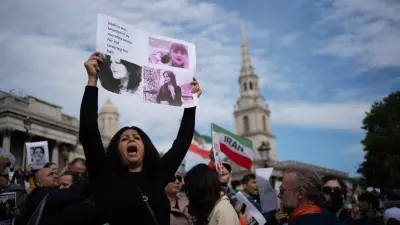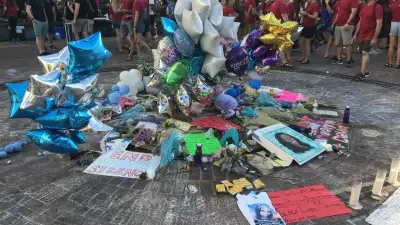Editor’s note: An Iranian journalist based in Tehran asked to share her thoughts on the nationwide protests against the government. To protect her identity, we are making an exception to our editorial guidelines by not using her birth name.

The recent death of Iranian demonstrator Mahsa Amini, 22, has sparked nationwide protests led by women and caught the attention of the world.
Brave demonstrators are tearing down government propaganda posters and blocking roads in protest against Amini’s recent detention and beating by Iran’s so-called “Morality Police” for supposedly not wearing her hijab properly. Women are required to wear loose clothing and head coverings.
After lapsing into a coma, Amini died, prompting nationwide protests against veiling and the Iranian regime’s human rights abuses and repressive policies in general. The wave of protests are some of the largest since the late 1970s, during the Iranian Revolution that led to the current Islamic regime.
Iranian security forces have killed protesters in a brutal crackdown. Also, Iranians’ access to the internet has been restricted and platforms such as WhatsApp, Signal and Instagram are blocked.
This generation is not likely to emigrate to the United States or Europe in search of freedom. They want to bring European and U.S.-style freedoms to Iran.
It’s largely a young movement. Many of the protestors are ages 15 to 40, born in the digital age. They grew up with social media — the TikTok generation.
This generation is not likely to emigrate to the United States or Europe in search of freedom. They want to bring European and U.S.-style freedoms to Iran.
As the protests move into the third week, spreading beyond Iran to European countries and places in the U.S., many high school and primary school students have torn pictures of Iran’s Supreme Leader, Ayatollah Ali Khamenei, and his predecessor, Ruhollah Khomeini, out of their schoolbooks.
Videos posted on Instagram show high school girls taking off their headscarves and crying out, “Women, life, freedom!”
Iranian women in and outside of Iran have also shared videos of themselves cutting their hair, with the caption, “We All Are Mahsa,” on Instagram as another form of collective, virtual protest and solidarity.
Although protestors have been demonstrating peacefully, government security forces retaliated swiftly, attacking women without headscarves and beating them, or surrounding, and often, shooting openly into crowds of students at universities where daily protests have been happening.
The United Nations issued sanctions on seven senior Iranian officials following these acts of violence and restrictions on internet access. So far, this has not deterred the government.
The internal and global reaction to the protests is reminiscent of the 2009 political protests known as the “Green Movement.”
I think the 2022 Mahsa Amini protests are a demand for social justice and change reminiscent of the 2020 nationwide racial justice protests in the wake of George Floyd’s death at the hands of a Minnesota police officer.
However, there is a marked difference between then and now — something which the Islamic Republic has failed to realize — and that is, this time the government is not struggling with a political movement, but a social and cultural one.
I think the 2022 Mahsa Amini protests are a demand for social justice and change reminiscent of the 2020 nationwide racial justice protests in the wake of George Floyd’s death at the hands of a Minnesota police officer.
Some professors in Iran have resigned in support of the uprising. Many actors, filmmakers, and athletes have gotten involved, sharing videos of themselves to help bolster the movement.
While driving through Tehran, I find myself repeating a new song by Iranian artist Shervin Hajipour, called “For,” which has become an anthem for the protests.
The 25-year-old singer and composer was arrested after his song went viral with millions of views. Now, I am listening to “For” and thinking of the demonstrations around the world.
I think of the students beaten, shot, and detained. I think of the Iranian girls who put their lives in danger to advocate for freedom. I think of those who will be killed in demonstrations.
I think of what else needs to happen so that people around the world will understand that a revolution is under way and the people of Iran are not going to stop — because they know if they do, there will be a massacre.







